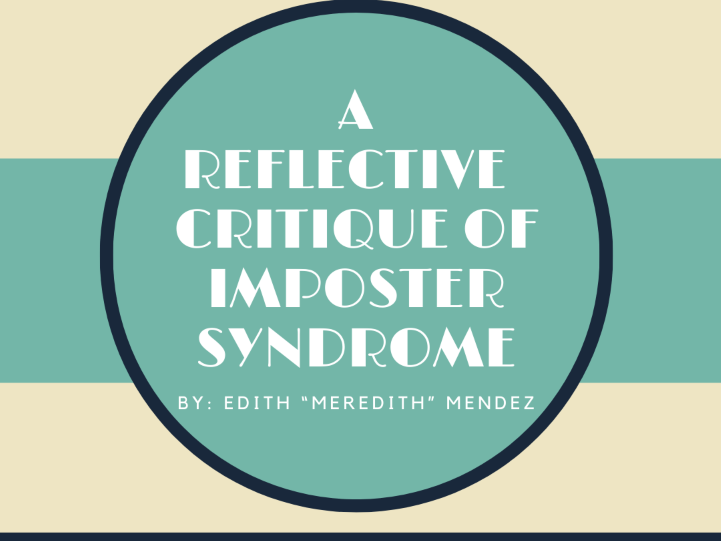
A Reflective Critique of Imposter Syndrome
New Professionals and Graduate Students
July 19, 2022
As an undergraduate and graduate student, I remember many occasions when I felt like I did not belong in higher education. I thought about how I was not good enough, smart enough, organized enough… Like I was barely getting by, and at some point, I was not going to be able to keep up the act anymore. I was so scared of failing and losing this opportunity I had worked so hard for. It was not until graduate school that I became familiar with imposter syndrome, or imposter phenomenon, based on a 1978 study by Suzanne Imes & Pauline Clance.
Learning more about it, I felt like I had found a term that explained my experiences as a first-generation student, and how much pressure I put on myself to succeed. I appreciated that I was not alone, and was so surprised to hear about staff and faculty’s experiences, especially as they continued to experience it even after they graduated and advanced in their careers. I utilized imposter syndrome as part of the basis for my master’s program action research project, investigating the mental health experiences of first-generation graduate students at my graduate school institution. As a higher education professional, I considered how I can relate to other first generation students who are likely having the same experiences.
While the term has provided me with some way of making sense of my experiences, it's also important to acknowledge its deficiencies. Often at times, imposter syndrome can be presented solely as the experiences encountered by an individual, but it does not consider the system or the environment that could be causing these feelings of inadequacy or experiences that can affect retention. In my case, I have to consider my own identity as a first-generation Latina woman, navigating the system of higher education that was not founded with my success or well-being in mind. I have to consider my background coming from an immigrant family who wants to support me but doesn’t know how to.I depended on free college preparatory programming as a K-12 student, which I was lucky to have access to, though limited as it was. I did not have the same foundation for success as other students who come from a higher socioeconomic status and who had access to more resources. The 1978 study I mentioned earlier is frequently cited in the discussion about imposter syndrome, and was based primarily on the experiences of white women. It did not go deeper into understanding what higher education institutions can do to reduce these experiences, which go hand in hand with genuine diversity, equity, access and inclusion efforts.
I haven’t completely eliminated imposter syndrome from my own lexicon, nor am I telling anyone else that they should or shouldn’t use it. I was able to put a lot of my experiences into words because I had a term to use, and many other studies have continued to build on the concept to be more holistic. But I acknowledge how problematic the term “imposter syndrome” can be in making students feel like imposter syndrome is an expected experience for them that they have to address on their own or with other students, rather than calling for institutional leaders to be held accountable to making their institutions more accessible and welcoming.
Author: Edith “Meredith” Mendez (she/her) is a first-generation college student, transferred from a community college, completed her BA in Human Development at CSU San Marcos and her MA in Higher Education Leadership at the University of San Diego. Her higher education experiences include promoting internship opportunities, working with student veterans and military-connected students, and advocating for mental health and first-generation students. She currently works as an internship counselor at UC San Diego’s Academic Internship Program. In her free time, Meredith enjoys exploring San Diego, watching shows like Stranger Things and Our Flag Means Death, walks in nature, and reading webcomics such as Lore Olympus.